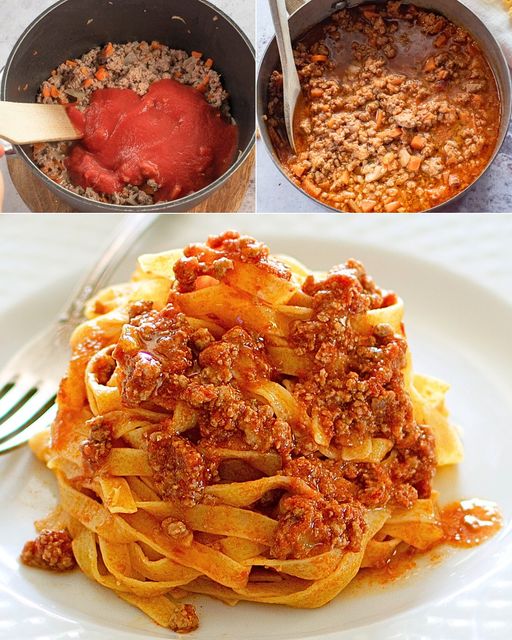How to prepare Bolognese sauce
Step 1
Cut the vegetables into small cubes1and then do the same with the bacon.
step 2
In a pan, fry the vegetables and bacon with a little oil2until everything is soft and well combined.
step 3
Add the minced meat3, mix and brown well.
Step 4
Moisten with white wine4and allow to evaporate.
Step 5
Pour in the tomato puree5and mix well.
Step 6
Now add the milk or cream6 and cook over low heat for at least 2 hours, adding a few ladles of stock if the sauce dries out too much.
Step 7
After cooking, season with salt and pepper7and use as desired to season pasta or to fill fresh pastries.
Advice
If you want to give the ragù a stronger and more powerful flavor, also add some sausage . The advice is to use luganega. For an even creamier consistency, try replacing the milk with fresh cream.
If you have leftover ragù, you can give it an extra touch by adding fresh mushrooms sautéed in a pan with oil, garlic and parsley. Add two tablespoons of fresh cooking cream and you have a rich seasoning to serve along with a soft and steaming polenta. You can also cook some rice, mix it with your spices and thus prepare delicious soups.
You can use the tomato puree or peeled tomatoes as you like , but you can also add tomato paste. If you want to reduce the acidity of the sauce , you can add 1 teaspoon of sugar.
Origins and curiosities
Although the official recipe was registered in 1982, Bolognese ragù dates back to around 1700, albeit in a different version. The first person to cook the original ragù recipe was Alberto Alvisi from Imola, and around 1800 ragù began to appear in Emilian cookbooks.
Garlic is not included in the original recipe, but is used in the modern version.
According to some, the secret of ragù lies precisely in the milk, because originally housewives sweetened the taste of the tomato with a little drop of milk.
What is the difference between Bolognese ragù and Neapolitan ragù?
The main difference between Neapolitan ragù and Bolognese ragù is the meat. In the first case, the meat is cut like a stew and cooked until the meat completely falls apart. In the second case, minced meat is used.
ADVERTISEMENT
Pages: 1 2

